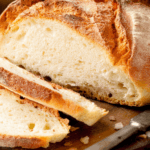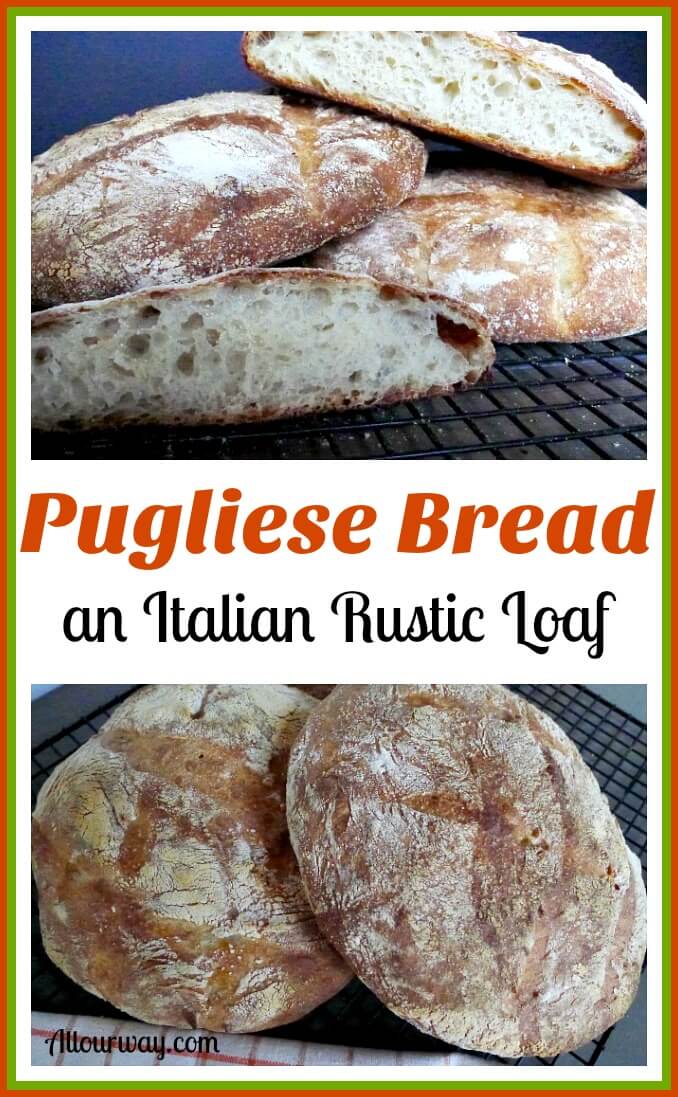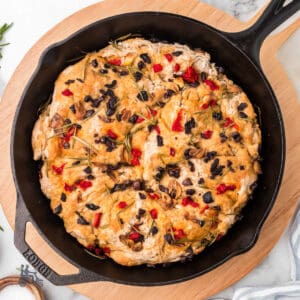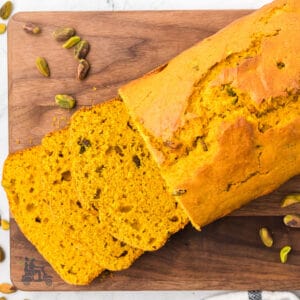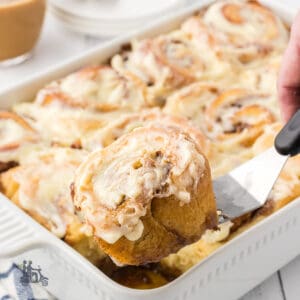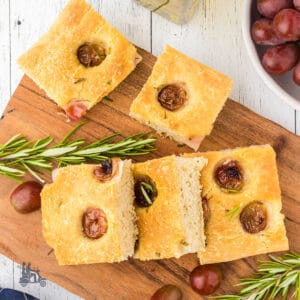The day The Bread Baker's Apprentice cookbook arrived was the day I discovered pugliese bread and a hint to my ancestral roots. I was not a newcomer to bread baking, but I wanted to learn more, to understand the artisanal bread movement and to learn its techniques. Peter Reinhart, the author of the bread book, is considered a master baker and teacher , so I bought his book.
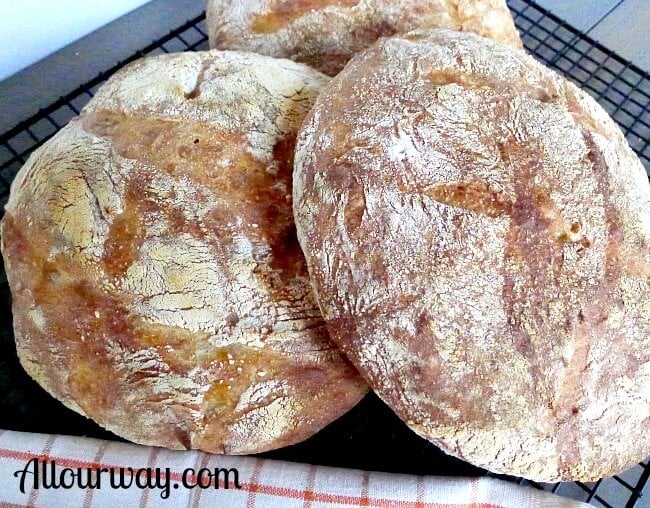
Finding the Pugliese bread recipe
How exciting to learn all about bread baking.
I was going to learn about formulas and percentages, starters, the difference between winter and spring wheat, why master bakers use instant yeast instead of active dry or compressed.
Peter Reinhart was the teacher and I was the apprentice. He would teach me what seasoned bakers took years to learn.

The approach was going to be methodical -- I was going to start at page one and go through each lesson and bake the bread represented in the chapter. I opened to the table of contents and what jumped out at me?
Pugliese Bread !
Now you're probably scratching your head wondering why I should have a bold/italic reaction to Pugliese bread?
The fact is that Pugliese is my maiden name. All I could think of was making Pugliese bread and sharing it and the fact that there was a bread named after us with my family.
Out went my plans to be methodical and take each lesson in order.

The rustic bread history
I jumped to page 222 and began to read. As I read, it began to dawn on me that the surname Pugliese referred to the Puglia {Apulia in English} region in Italy which is in the southeastern part of the country.
Well, I was born in the northeastern region of Friuli-Venezia Giulia and as far as I knew all of my grandparents were from the north. But, somewhere along the line the ancestors on my papa's side must have migrated to the north.
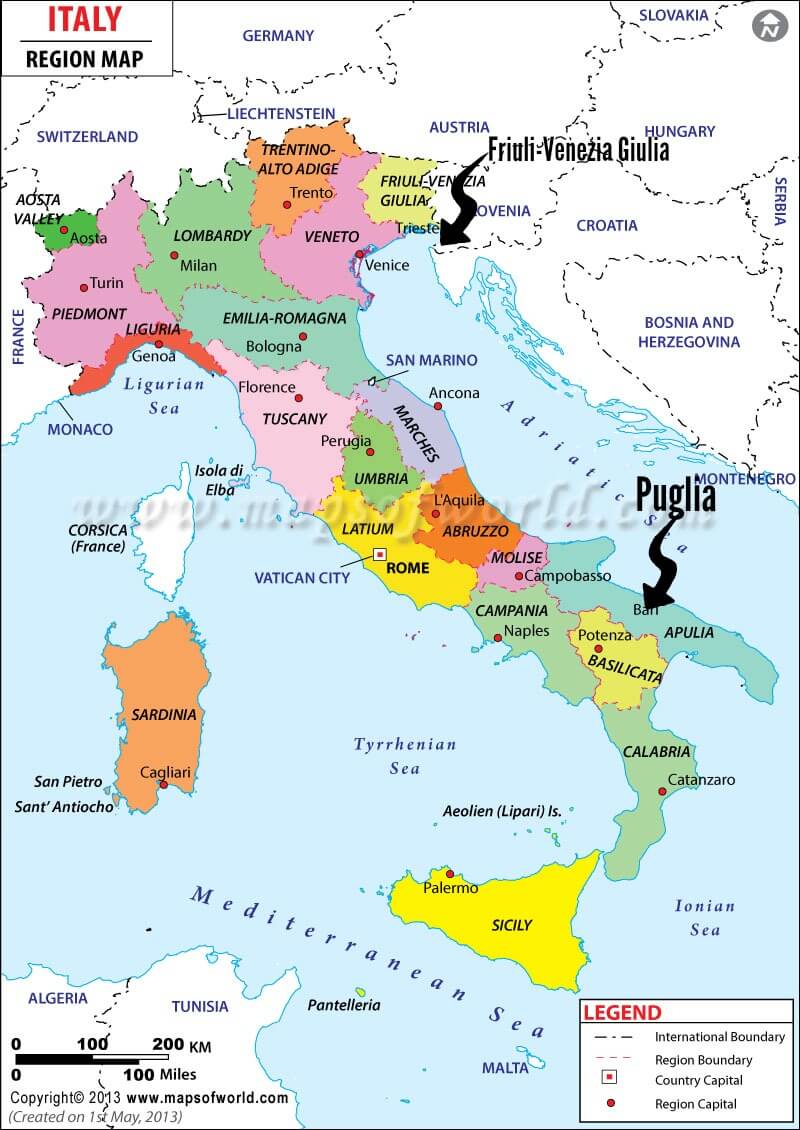
The mysterious background
Once I made the loaves of bread, I hurried over to my parent's house
carting the bread and cookbook with me. I not only wanted them to sample the bread but I also wanted them to see for themselves that a Pugliese bread existed. I was curious about our last name being linked to Puglia so I asked about our ancestral origins .
Unfortunately, neither mamma nor papa knew anything because both sets of parents died when they were very, very young.
All I know about the nonni ( grandparents ) is that they were contadini (farmers).
The technique for the rustic bread
I've made Pugliese bread countless times throughout the years. It's a lot like ciabatta-- it's a very wet dough --and the technique for preparing it is similar.
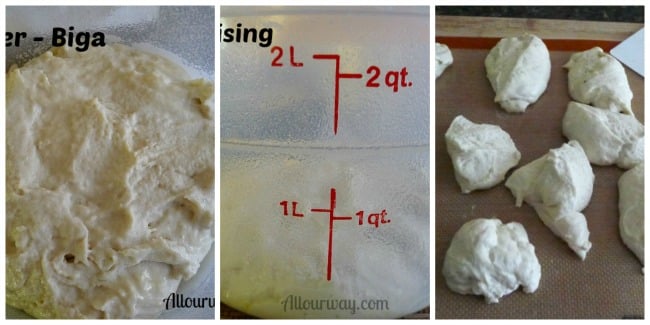
The biga start
Pugliese bread begins with a biga which is a pre-ferment. A food processor works great when making this - zip! zip! zip! and you're done.
The dough ferments in the bowl for 2 to 4 hours and then the biga is removed from the bowl, gently kneaded to degas it and then placed back into the bowl and refrigerated overnight.
Starting the process
The next day, take the dough out of the refrigerator one hour before making the bread and cut the biga into 10 pieces.
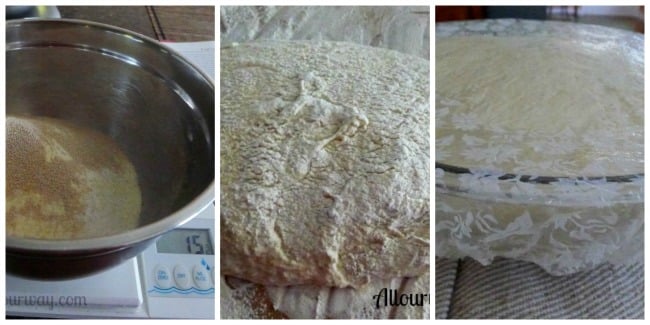
I weigh out the unbleached bread flour and fancy durum flour then add the salt and yeast. It's good to whisk the dry ingredients together before putting them into a large mixing along with the biga, mashed potatoes, and the water.
The dough is very sticky so you need a lot of extra flour. Here you follow the same procedure as the tutorial for making ciabatta.
After the dough goes through the stretch and fold method it goes into a bowl to ferment some more.
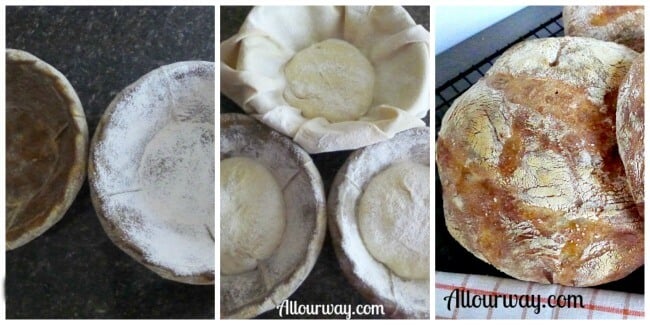
One distinction between Pugliese and ciabatta is that Pugliese is formed in a round loaf rather than the slipper shape of ciabatta.
The baskets are first sprayed with vegetable spray and then dusted heavily with flour.
Forming the loaves
I transferred the dough to the cutting board and then I gently cut the dough into three pieces being careful not to degas the dough too much. I make each piece of dough into a boule -- a tight ball.
You can do this by stretching and smoothing the dough from top to bottom and pinching the bottom. The smooth part of the ball is put down and the pinched side up.
Baking the Pugliese bread
The bread starts off in a 500°F oven and then finished in a 450° F oven -- until the Pugliese bread is a deep golden brown and the inside registers about 205°F.
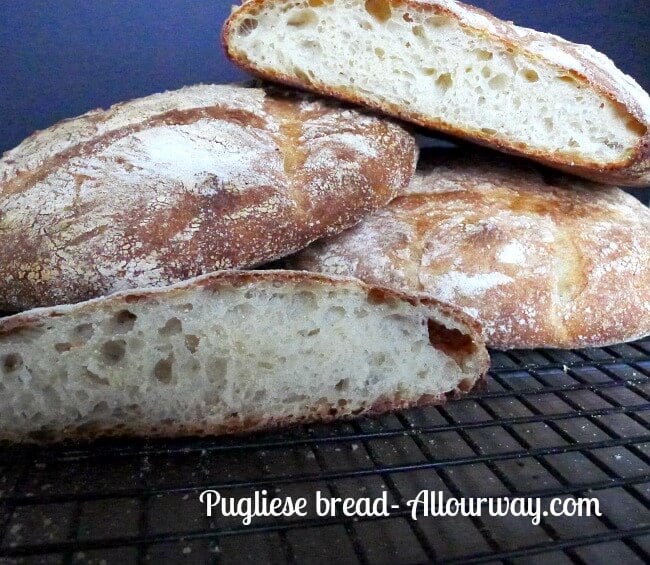
Another distinction between this bread and ciabatta is that this bread uses fancy durum flour and sometimes a few mashed potatoes.
The starch in the potato adds a nice flavor and tenderizes the bread. Pugliese bread has a wonderful open crumb, and the long fermentation enhances the bread's flavor.
Another bread with the name Pugliese you may like to try is Focaccia Pugliese.
If you simply can't resist stopping by a French bakery for their marvelous loaves of bread, make this 4-hour Crusty French Bread recipe at home. Everyone will think you bought it.
Be sure to sign up for our weekly newsletter to see what we are cooking and baking. We love to share.
Tutti a tavola è pronto!
Un caro saluto e alla prossima.
YOU MAY NEED...
The following are affiliate links. We are a participant in the Amazon Services LLC Associates Program, an affiliate advertising program designed to provide a means for us to earn fees by linking to Amazon.com and affiliated sited.
We use a Banneton Proofing Basket like this every time we make a round loaf. Whether it's a rustic bread like this Pugliese bread or a our dough bread, the basket makes it easy to keep the beautiful shape.
What's new here? Check out my All Our Way Store on Amazon. We'll be adding more items we love and use or wish we had to make cooking fun and easy.
Thank you for being a part of All Our Way.
Pugliese Bread - An Italian Rustic Loaf Recipe
📖 Recipe
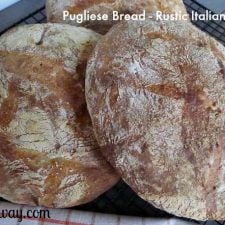
Pugliese Bread - An Italian Rustic Loaf
Equipment Needed
Ingredients
Biga
- 2 ½ cups unbleached bread flour (11.25 ounces)
- ½ teaspoon instant yeast (.055 ounce)
- ¾ cup plus 2 Tablespoons to 1 cup water, room temperatures (7 to 8 ounces)
For the Pugliese Bread Dough
- 18 oz. Biga This is all of the biga you made.
- 1 ¼ cups fancy durum flour (7 ½ ounces)
- 1 ½ cups unbleached bread flour (7 ½ ounces)
- 2 ¼ teaspoons salt (¼ ounce or 10 grams)
- 1 ½ teaspoon instant yeast (¼ ounce or 5 grams)
- ⅓ cup mashed potatoes (3 ounces)
- 1 ⅔ cup lukewarm water (12 to 13 ½ ounces or 340 ¼ to 382 ¾ grams)
Instructions
- Biga - Day 1
- Stir together the flour and yeast in the food processor bowl using the metal blade. Add all of the ¾ cup plus 2 tablespoons of the water through the feed tube. Pulse until the dough comes together and is neither too sticky nor too stiff. Continue to pulse until the dough is soft and pliable. This does not take very long.
- Lightly oil a bowl with vegetable spray and transfer the dough to the bowl making sure that the entire surface of the dough is coated with oil. Cover the dough with plastic wrap (or shower cap) and ferment at room temperature for 2 to 4 hours -- or until nearly double in size.
- Remove the dough from the bowl, knead it lightly to degas, and return to the bowl, covering the bowl with the plastic wrap. Place the bowl in the refrigerator overnight. You can keep this for up to 3 days.
Bread Baking Day
- Remove the biga from the refrigerator 1 hour before making the dough. Cut it into about 10 small pieces with a pastry scraper or a serrated knife. Spray the dough with vegetable spray and cover with plastic wrap and let sit for 1 hour to take off the chill.
- Whisk together the flour, salt, and yeast in the bowl of a stand mixer. Add the biga pieces, mashed potatoes, and 12 to 13 ½ oz. (1 ⅔ cup) water. Measure all of the water out but leave a Tablespoon or 2 in the measuring cup. Using the paddle attachment mix on low speed until the ingredients form a wet, sticky ball. If there is still some loose flour add the rest of the water in the measuring cup and continue to mix.
- Switch to the dough hook and mix on medium speed for 4 to 5 minutes, or for as long as it takes to create a smooth, sticky dough. The dough will clear the sides of the bowl but it will stick to the bottom. The dough will be sticky -- the wetter it is, the better the final bread will be.
- Sprinkle bread flour on the counter to make a bed.Using a scraper or spatula dipped in water, transfer the dough to the bed of flour and proceed with the stretch-and-fold method. This method entails (A) dusting the top of the dough liberally with flour, patting the dough into a rectangle. Wait 2 minutes for the dough to relax. Coat your hands with flour and (B) lift the dough from each end, stretching it to twice its size. (C) Fold the dough over itself, letter style to return to a rectangular shape. Mist the top of the dough with spray oil, again dust with flour, and loosely cover with plastic wrap.
- Let it rest for 30 minutes. Repeat the stretch-and-fold method and again mist with spray oil, dust with flour, and cover. (Each time you repeat this process, the dough will become stronger, more elastic, and less sticky.)
- Lightly oil a large mixing bowl. For the third time, repeat the stretch-and-fold technique. Transfer the dough to the bowl and cover the bowl with plastic wrap. Ferment the dough at room temperature for 2 hours.
- Generously dust the counter with flour and transfer the dough to the counter, taking care not to degas the dough. With a metal pastry scraper or a serrated knife dusted with flour, divide the dough into 3 pieces.With floured hands, gently shape the dough pieces into 3 boules (balls). You do this by creating surface tension as you bring the opposite ends together to make a ball. Keep smoothing down the sides from top to bottom. Pinch to seal the bottom of the dough where the creases come together. Let them relax seam-side down on the counter while you prepare the 3 proofing bowls.
- Coat the proofing bowl with spray oil and then line the bowl with a cloth napkin, or smooth towel. Spray the cloth with spray oil and dust with flour. (I have muslin-lined bannetons and for the third bowl I used a pastry cloth with a regular glass bowl) Gently transfer the dough, seam side up, into each bowls. If the seam opens up, pinch it closed. Mist the top of the dough with spray oil and cover the bowls with the flaps of the cloth or a smooth dish towel.
- Proof at room temperature for 60 to 90 minutes, or until the dough has expanded to about 1 ½ times its original size.
- Preheat the oven to 500 F. Have a water spray bottle ready.
- Generously dust the back of a sheet pan with semolina flour or cornmeal. Spray a sheet of kitchen parchment with spray oil and put the parchment -- oiled side up -- on the sheet pan. Gently transfer the dough to the pan by carefully turning each bowl over onto the pan, lifting off the bowl, and then carefully peeling off the cloth. The dough will spread out on the pan. With a sharp razor blade or french lame, score the loaves with the pound (#) sign. Transfer the dough to the baking stone (or bake on the pan). After 30 seconds, spray the oven walls with water and close the door again. Be careful you don't spray the light!!!! Repeat twice more at 30-second intervals. After the last time lower the oven setting to 450 F and bake for 15 minutes. Check the loaves and rotate 180 degrees for even baking. Continue baking for 10 to 15 minutes or until the breads are a deep golden brown and the internal temperature registers 205 F.
- Remove the loaves from the oven and transfer them to a cooling rack. Allow the loaves to cool for at least 40 minutes. This will be sheer torture!
Notes
- Although there seems to be a lot of steps this is not a difficult recipe to make. It is a wet dough-- keep your counter well dusted with flour as well as your hands.
- You can make this bread by hand.
- This recipe is adapted from the Peter Reinhart's "The Bread Baker's Apprentice"
- Baker’s Percentage Formula for Pugliese bread:
Biga –105%
Fancy durum flour — 100%
Salt — 3.8%
Instant yeast — 1.1%
Mashed Potatoes — 20%
Water (approx.)– 85%
———————–
Total 314.9%
Nutrition
Sign up for the emails and never miss another recipe!!
We'll never share your email or send you spam. PromiseNote: Recipes and content from All Our Way©2014 is copyright protected. Please do not use content or recipe without prior written permission. If you want to share the information, please link to this post. Thank you.


